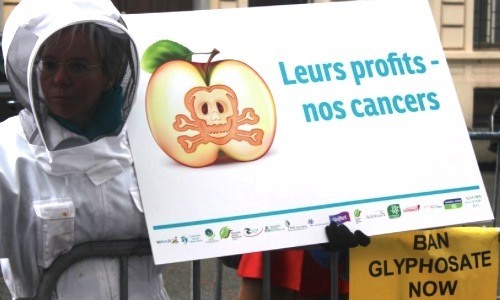
France, Sweden, Italy and the Netherlands Rebel Against Relicensing of Monsanto’s Glyphosate

A number of European Union member countries are rebelling against the European Commission’s plans to approve the relicensing of glyphosate.
.@WHO says #glyphosate probably causes cancer, Monsanto says it's safe. Whom will the EU trust? #YesYouCanBan pic.twitter.com/vkSzWRmdRE
— Greenpeace (@Greenpeace) March 7, 2016
The Guardian reported that experts from the EU’s 28 member states are scheduled to vote on relicensing glyphosate on Monday and Tuesday in Brussels, however the vote may be postponed due to reservations that several EU countries have over glyphosate’s health risks.
Glyphosate, the main ingredient in Monsanto‘s top-selling weedkiller Roundup, was classified by the World Health Organization’s International Agency for Research on Cancer (IARC) as a “possible carcinogen” last March, whereas the European Food Safety Authority (EFSA) put out their own report in November, concluding that that glyphosate is “unlikely to pose a carcinogenic hazard to humans.”
France, The Netherlands, Sweden and Italy have raised concerns about the herbicide and have pushed against relicensing.
French Minister of Ecology Ségolène Royal urges for an outright ban on glyphosate herbicides across the EU, basing the decision over the IARC’s findings.
Similarly, The Guardian quoted Swedish environment minister Åsa Romson saying, “We won’t take risks with glyphosate and we don’t think that the analysis done so far is good enough. We will propose that no decision is taken until further analysis has been done and the EFSA scientists have been more transparent about their considerations.”
Bad news for #Monsanto as #Italy joins other EU countries opposing #glyphosate licensing renewal https://t.co/7OKuNxUPOI
— Global Justice Now (@GlobalJusticeUK) March 7, 2016
“We are raising concerns because our citizens are raising concerns,” Romson added. “They want to feel safe and secure with food and production in our society.”
The Netherlands also called for a postponement of the EU-wide decision with Marcel van Beusekom, a spokesman for the Netherlands agriculture ministry, commenting, “If there is no possibility to postpone the vote, then we will vote against the proposal.”
Commission officials told The Guardian that a vote would not go ahead if support for relicensing continued to erode.
“If we see that many states want to think it over or there is a growing [opposition], if there is not a qualified majority, I doubt that it will be put to a vote,” one official said. “The ball is in the member states’ court.”
Photos from today's action on #glyphosate Background: https://t.co/vE6LJ33Itj pic.twitter.com/e1cpyjh5o4
— CEO (@corporateeurope) March 7, 2016
Licensing for glyphosate ends in June and the European Commission is proposing to grant the herbicide a new 15-year lease.
This move by France and their EU partners is a major blow to Monsanto and other large pesticide companies “which rely on glyphosate-based herbicides for a large percentage of their global profits,” Sustainable Pulse wrote.

 233k
233k  41k
41k  Subscribe
Subscribe 